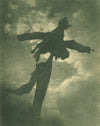Antoni Campañà was born at the same time as photojournalism, a field in which he made a name for himself as a sports reporter and pioneer of tourist postcards. Before turning 30, Campañà had achieved wide national and international recognition for h...
Leer más
Antoni Campañà was born at the same time as photojournalism, a field in which he made a name for himself as a sports reporter and pioneer of tourist postcards. Before turning 30, Campañà had achieved wide national and international recognition for his refined mastery of bromographies. In the years before the Civil War, he received numerous awards and consolidated his position as an artist. He was a member of the Agrupació Fotogràfica de Catalunya (Catalan Photographic Association) and in 1933 traveled to Munich to train with photographer Willy Zielke. He carried out significant work of experimentation and innovation, thus transcending the parameters of pictorialism and becoming an unparalleled reference point for experimental photography in Spain. From those early 1930s, we have compositions such as Tracció de sang (Blood Trace) (1933), framed within the costumbrista portrait of farming and tradition.
When the Civil War broke out, Campañà's political commitment emerged through his gaze, leading him to compose an extensive photographic documentation of the war. Unlike many of his contemporaries, Campañà's visual testimony remained hidden for decades. Thirty years after his death, his family discovered the images stored in red boxes, which are revealed in The Red Box (2019), by reporter Plàcid Garcia-Planas, historian Arnau Gonzàlez i Vilalta, and photographer David Ramos. It was published in Catalan and Spanish by Comanegra and in French by Éditions du Seuil.
From March 18 to July 18, 2021, the MNAC (Museu Nacional d'Art de Catalunya) will host the exhibition The Infinite War. Antoni Campañà.
Leer menos


